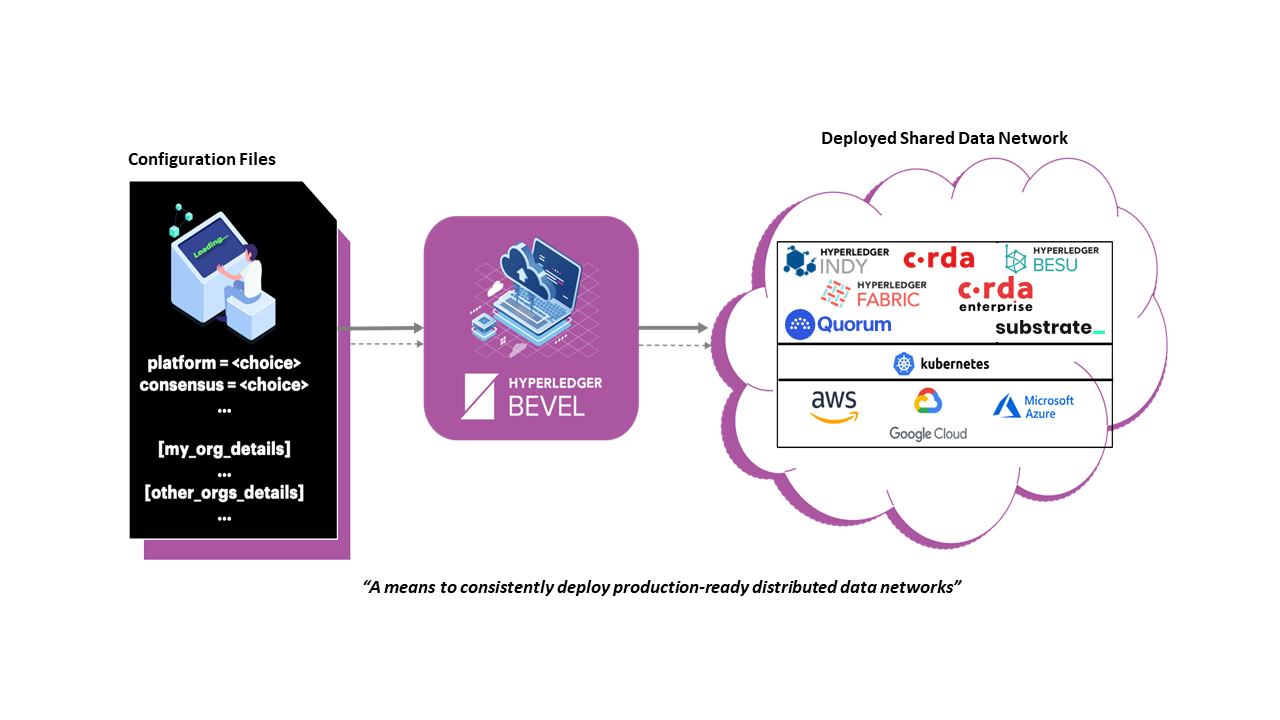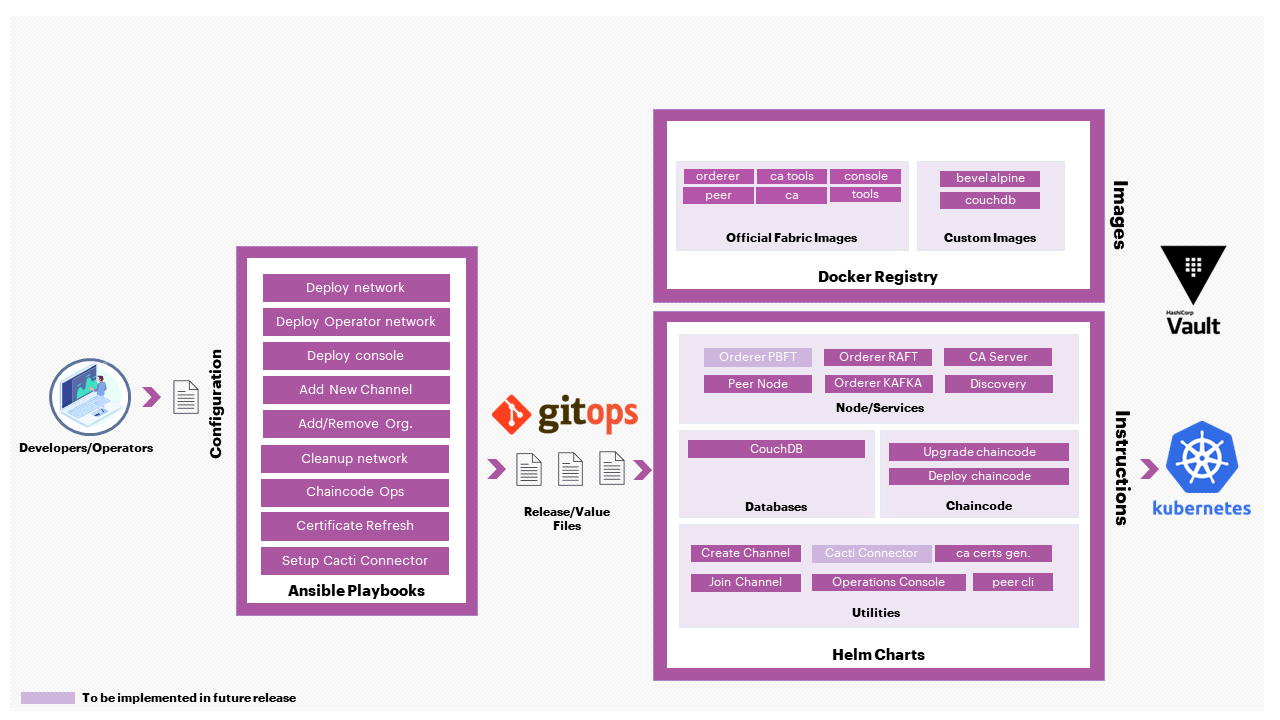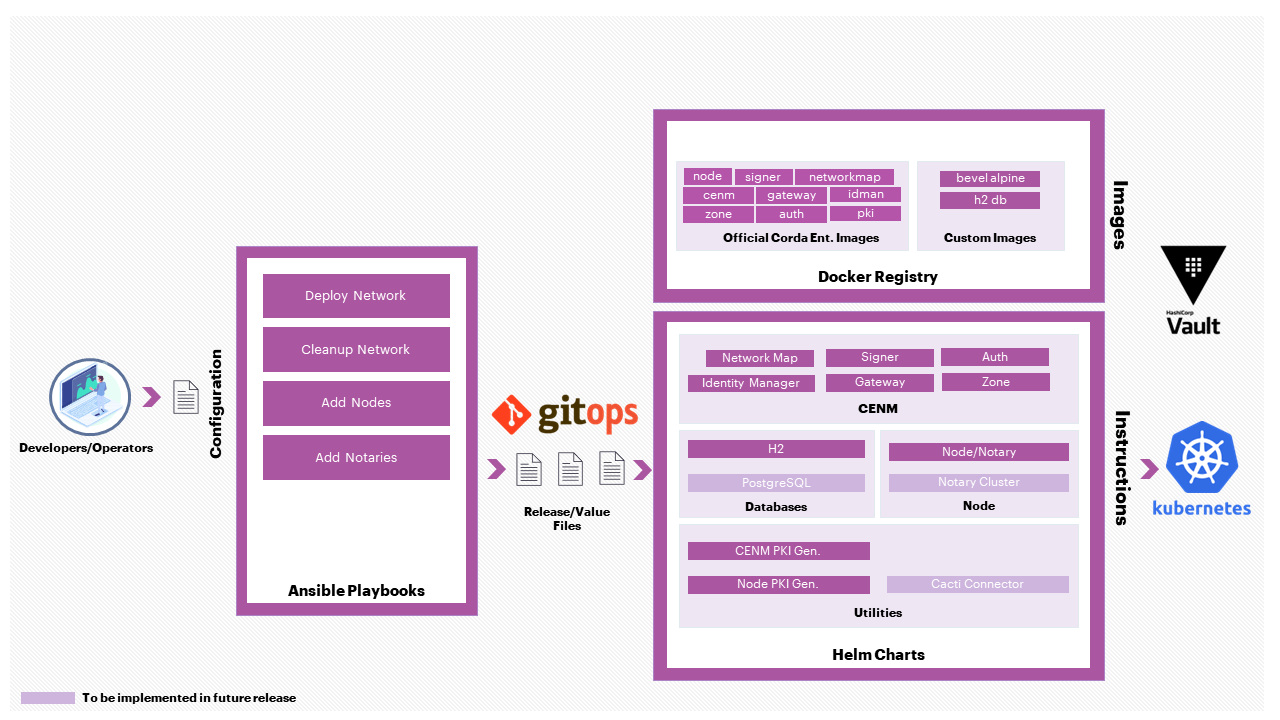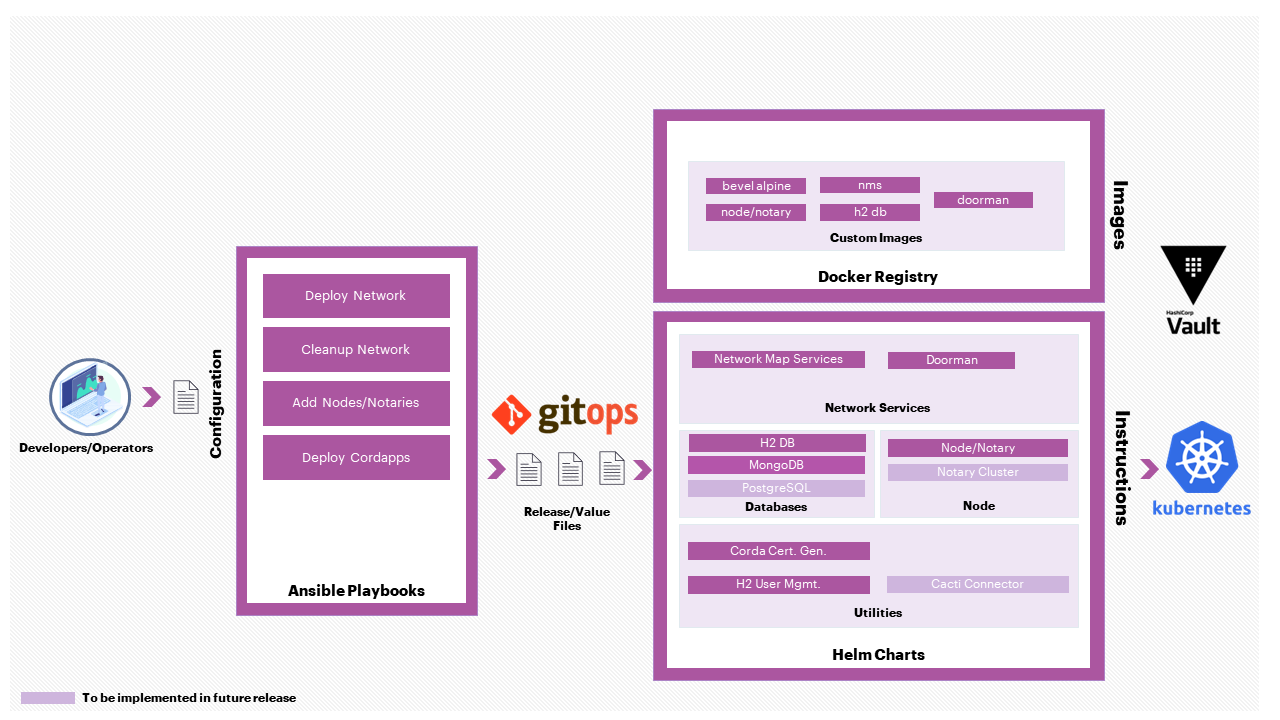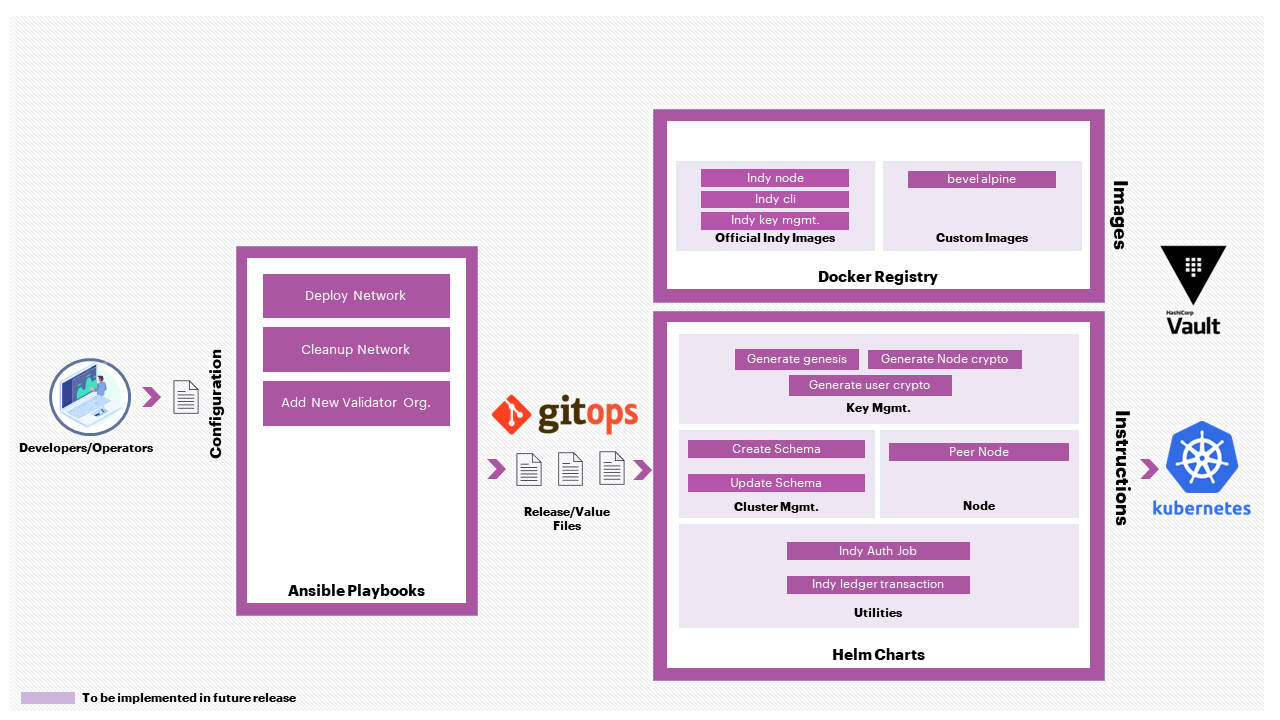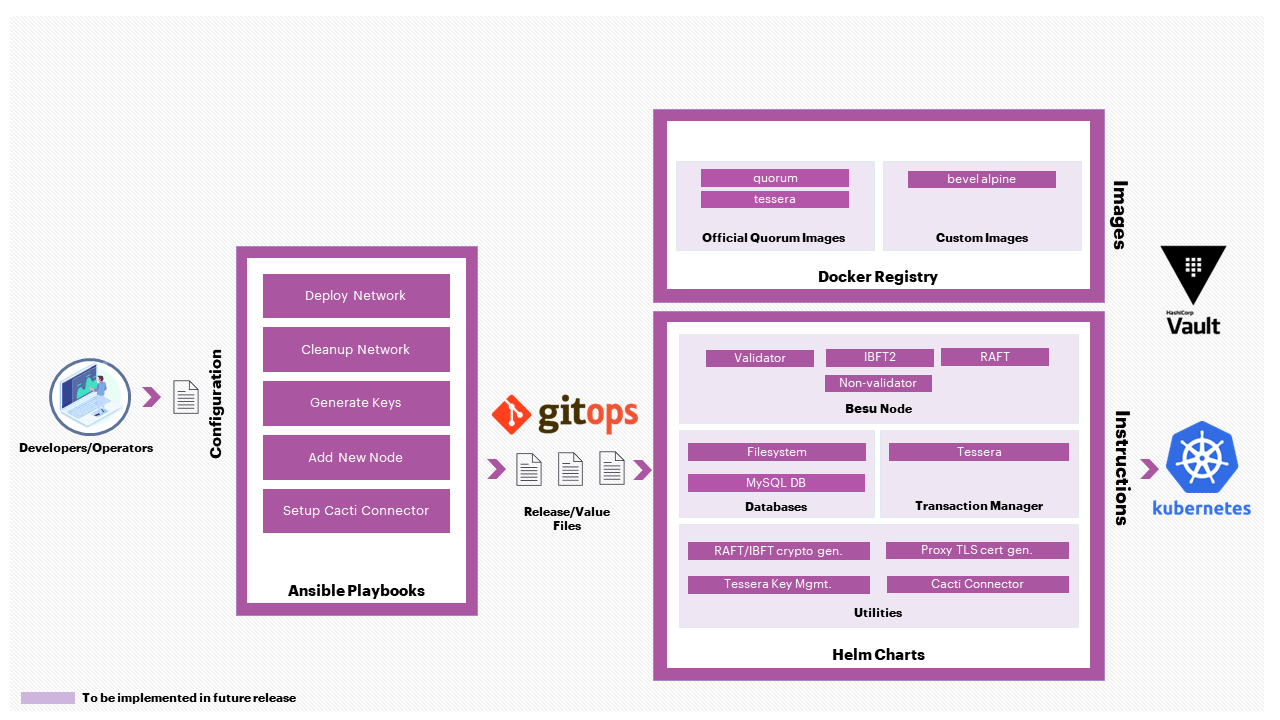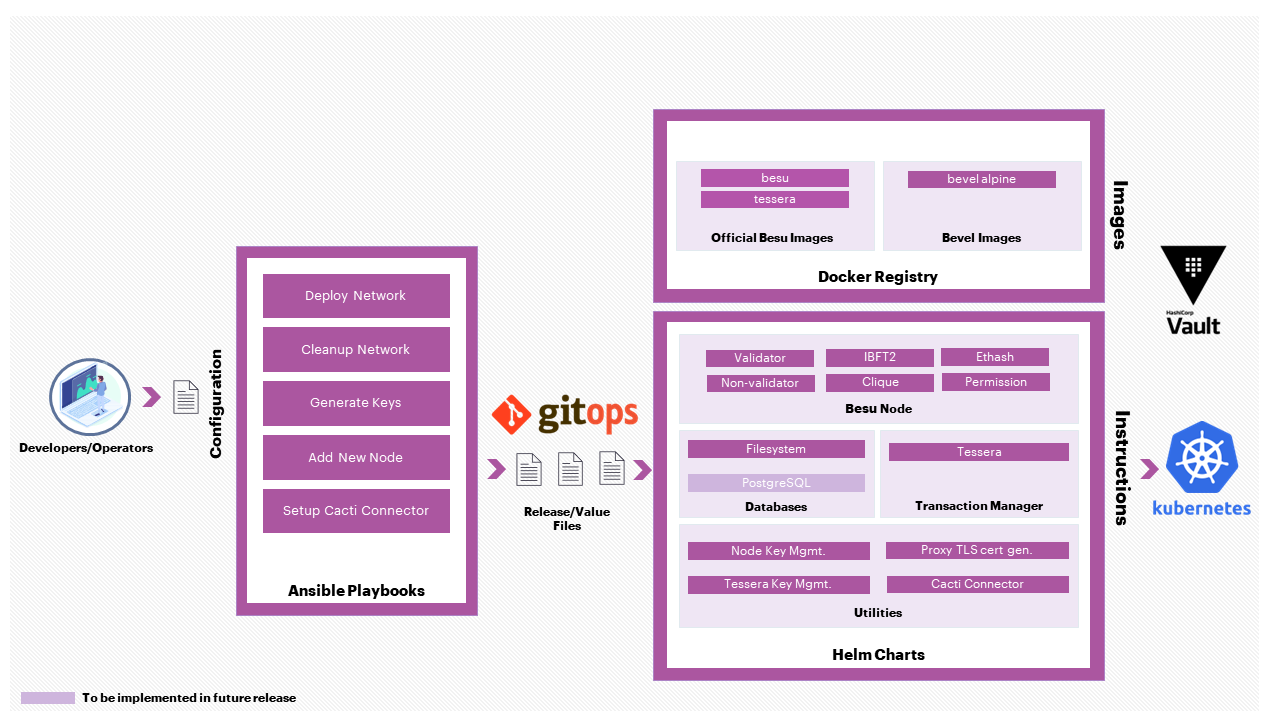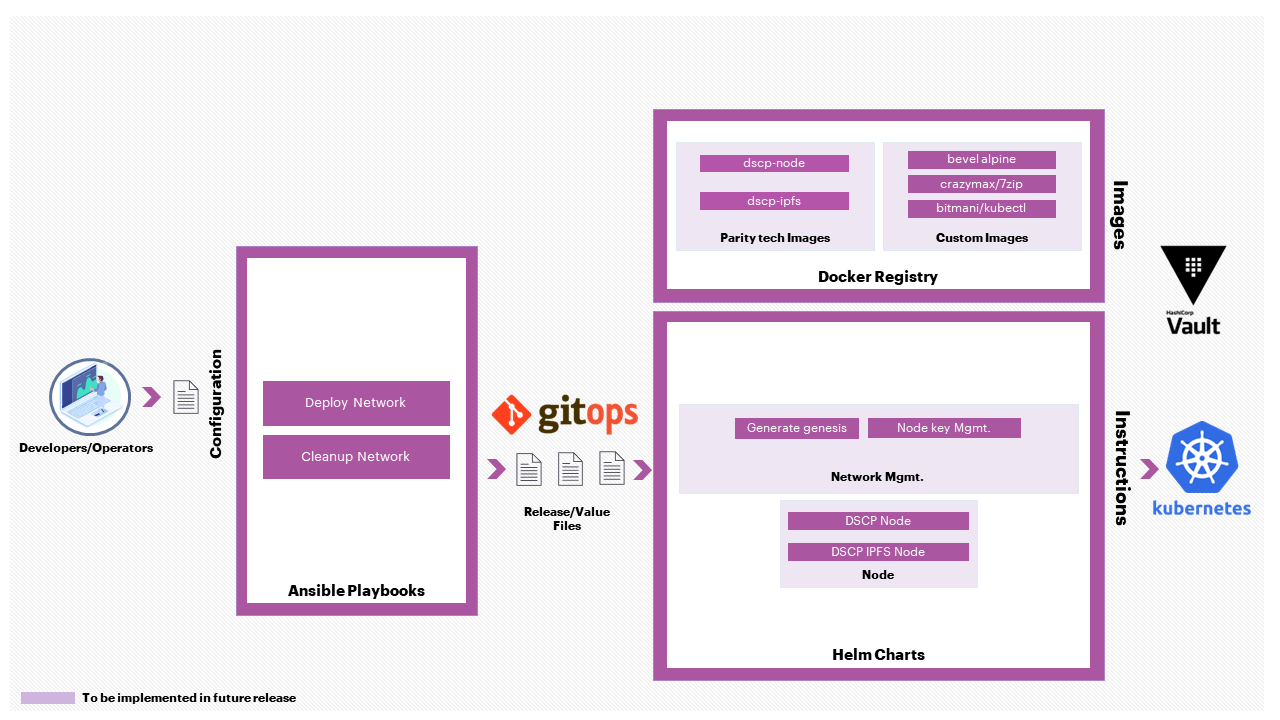An automation framework for rapidly and consistently deploying production-ready Distributed Ledger Technology (DLT) platforms.
Hyperledger Bevel delivers an automation framework for rapidly and consistently deploying production-ready DLT platforms to cloud infrastructure.
Hyperledger Bevel is an accelerator/tool that helps developers rapidly set up and deploy secure, scalable and production-ready DLT network(s) that also allows new organizations to be easily on-boarded on the network. Bevel facilitates a safe and secure way of deploying and operating different DLT platforms.
It includes:
- Helm charts to deploy different DLT nodes and to generate the related crypto/identities.
- Helm charts for various operational features like adding new nodes, and deploying smart contracts.
- Helm charts to deploy Hyperledger Cacti connectors for Fabric, Quorum and Besu networks.
- Ansible playbooks and modular role definitions to automate the deployment of Helm charts.
- Ansible playbooks and roles to automate deployment of Hyperledger fabric using bevel-operator-fabric(Kubernetes operator for managing Hyperledger Fabric networks).
- Integrated CD using GitOps so that once the network is set up, all changes can be done via git PRs/merges.
- Configuration for Ambassador Edge Stack, HAProxy (for Hyperledger Fabric) and Isto Ingress (for Substrate) to act as Ingress Controller.
Hyperledger Bevel currently supports R3 Corda OS and Enterprise, Hyperledger Fabric, Hyperledger Indy, Hyperledger Besu, Quorum and Substrate. Other DLT platforms can easily be added.
To get started with the framework quickly, follow our Getting Started guidelines.
Detailed operator and developer documentation is available on our ReadTheDocs site.
The documentation can also be built locally be following instructions in the docs folder.
For Hyperledger Fabric, we use the official Docker containers provided by that project. A number of different Ansible scripts will allow you to either create a new network (across clouds) or join an existing network.
For Corda Enterprise, we build Docker containers from the Corda source with licensed jars. A number of different Ansible scripts will allow you to either create a new network (across clouds) or join an existing network.
For Corda Opensource, we build Docker containers from the Corda source. A number of different Ansible scripts will allow you to either create a new network (across clouds) or join an existing network.
For Hyperledger Indy, we build Docker containers from our source code. A number of different Ansible scripts will allow you to create a new network (across clouds).
For Quorum, we use the official Docker containers provided by Quorum. A number of different Ansible scripts will allow you to either create a new network (across clouds) with choice of Consensus (between IBFT and RAFT) and a transaction Manager.
For Hyperledger Besu, we use the official Docker containers provided by that project. A number of different Ansible scripts will allow you to create a new network (across clouds).
For Substrate, we use the official Docker containers provided by that project. A number of different Ansible scripts will allow you to create a new network (across clouds).
We welcome your questions & feedback on our Discord channel. Please join our Discord first.
We welcome contributions to Hyperledger Bevel in many forms, and there’s always plenty to do!
Please review contributing guidelines to get started.
If you are not using the provided Jenkins automation scripts, you can run the provisioning scripts within a docker runtime independent from your target Kubernetes cluster.
# Build provisioning image
docker build . -t ghcr.io/hyperledger/bevel-build
# Run the provisioning scripts
docker run -it -v $(pwd):/home/bevel/ ghcr.io/hyperledger/bevel-build
Mark Wagner (Github: n1zyz, email: mwagner@redhat.com) - TSC Member


